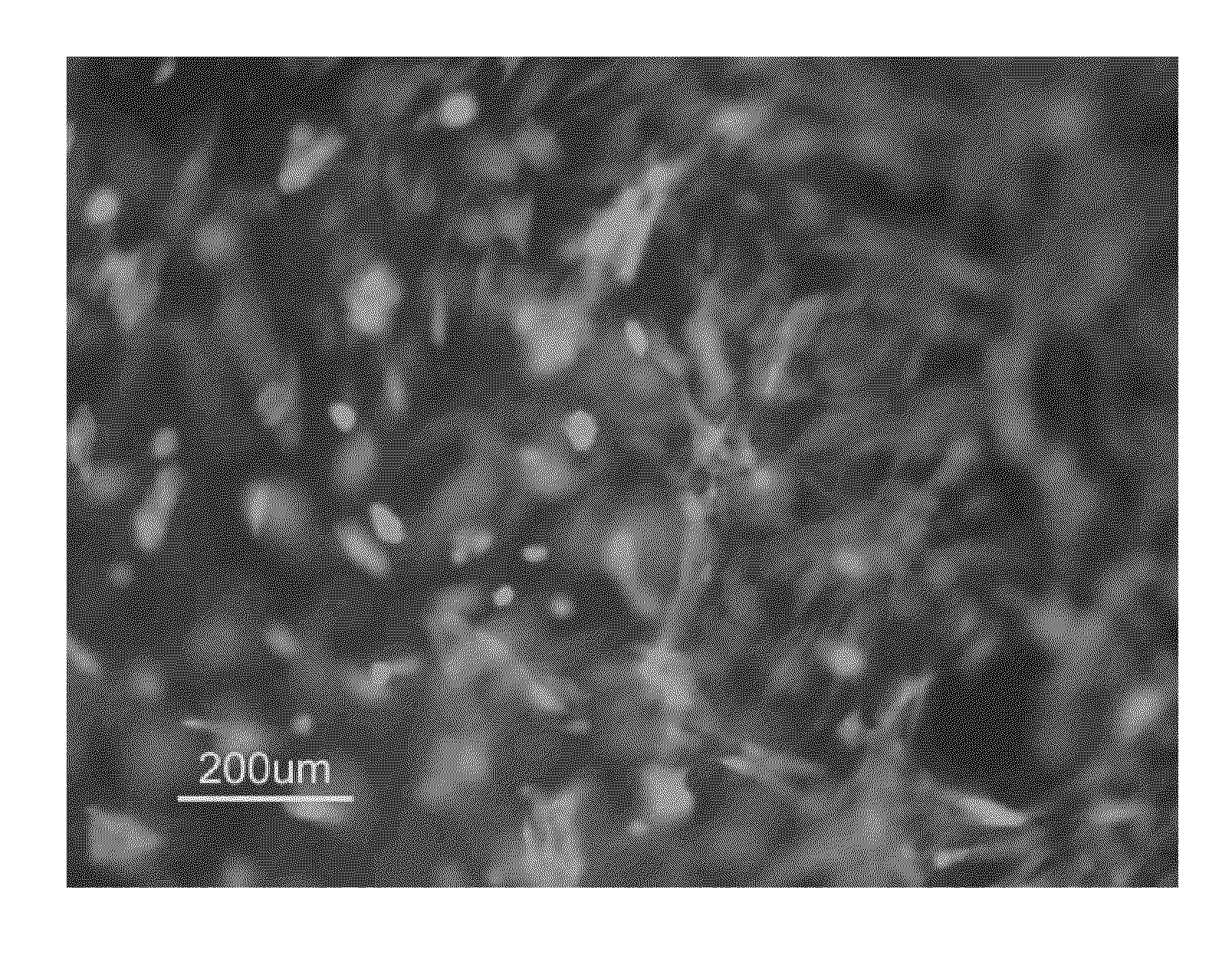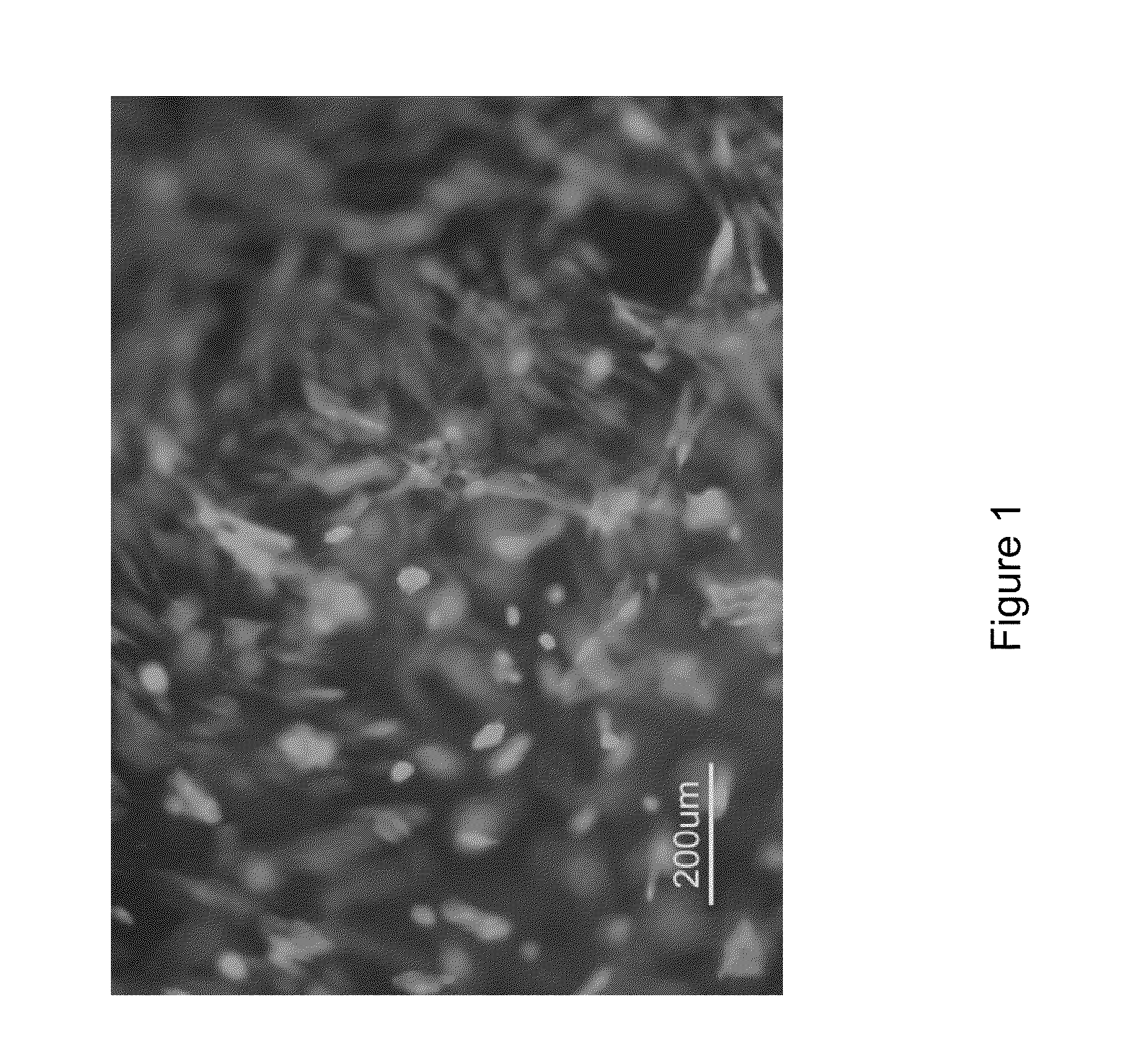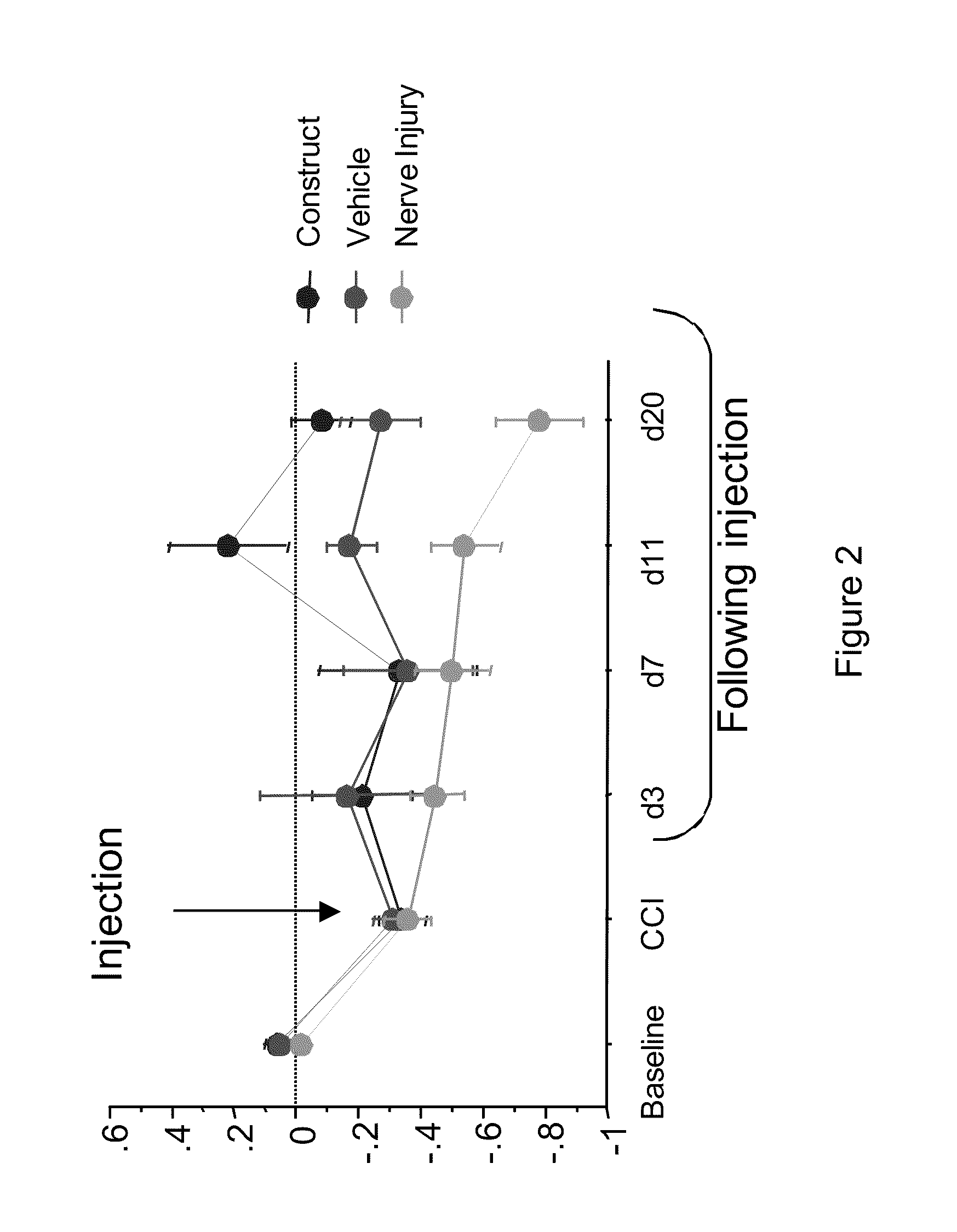Systemically and locally administered cells for neuropathic pain
a neuropathic pain and local administration technology, applied in the direction of nervous disorders, muscular disorders, drug compositions, etc., can solve the problems of opioids causing nausea, constipation, respiratory depression, etc., to reduce pain, block ectopic neuronal firing, and reduce pain
- Summary
- Abstract
- Description
- Claims
- Application Information
AI Technical Summary
Benefits of technology
Problems solved by technology
Method used
Image
Examples
specific embodiments
[0073]In its various embodiments described herein, the present invention features methods and pharmaceutical compositions for treatment of chronic and neuropathic pain. These methods and pharmaceutical compositions are designed to stimulate and support neural tissue growth or healing, and to improve the regeneration and repair of tissues surrounding the neural tissue, including but not limited to, dermal tissue, vascular tissue, connective tissue, cartilage, adipose tissue, muscle tissue, tendons or ligaments.
[0074]The cells of the invention include, but are not limited to, progenitor cells and cell populations derived from postpartum tissues, umbilicus tissue in particular and the like. A more detailed explanation of preferred cells may be found below.
[0075]Cells
[0076]The description of the isolation and characterization of the preferred cells of the invention are described in U.S. Patent Publication Nos. 2005 / 0032209, 2005 / 0058631 and 2005 / 0054098 which are incorporated in their e...
example 1
Seeding Cells In Fibrinogen-Thrombin Constructs
[0181]Human UTCs were removed from cryogenic storage, removed from cryoprotectant and washed with PBS containing Ca / Mg. Cells were resuspended in a volume of 200-300 μl. Fibrinogen and thrombin were diluted in 50 μm aliquots such that addition of 50 μl thrombin and 50 μl fibrinogen to cells resulted in a final dilution of 1:133 and 1:8 respectively. Immediately upon addition of the thrombin component, material was dispensed into a low cluster cell culture dish and placed in the incubator with culture media as previously described. Cells and construct were placed in a 37° C. incubator with 5% CO2 for 4 days. To assess viability, cells were incubated with Live / Dead stain (Invitrogen, Carlsbad Calif.) using manufacturers instructions and viewed under a fluorescent microscope.
[0182]Human UTCs were plated with thrombin and fibrinogen. After four days, the hUTCs were checked for viability by fluorescent microscopy following application of a v...
example 2
Local and Systemic Administration of Cells
[0184]To demonstrate that local and systemic administration of hUTCs to animals reduced pain behavior, the inventors subjected animals to chronic constriction injury (CCI). CCI is a common model for testing agents and therapies for neuropathic pain (see Bennett and Xie, Pain, 1988; 33:87-107). Sprague-Dawley rats weighing 200-225 g were first anesthetized with xylazine and ketamine. The animals' sciatic nerve was isolated. Four loose ligatures using 4-0 chromic catgut suture were placed on the sciatic nerve as it exits the sciatic notch. Baseline behavior (mechanical sensitivity to Semmes Weinstein filaments) was obtained for all animals prior to the surgery. Five or six days following surgery animals were re-tested and groups were stratified to assure that each group demonstrates similar pain behavior and that the distribution of pain severity in each group is similar.
[0185]At 5-6 days following surgery, immediately following testing, anima...
PUM
 Login to View More
Login to View More Abstract
Description
Claims
Application Information
 Login to View More
Login to View More - R&D
- Intellectual Property
- Life Sciences
- Materials
- Tech Scout
- Unparalleled Data Quality
- Higher Quality Content
- 60% Fewer Hallucinations
Browse by: Latest US Patents, China's latest patents, Technical Efficacy Thesaurus, Application Domain, Technology Topic, Popular Technical Reports.
© 2025 PatSnap. All rights reserved.Legal|Privacy policy|Modern Slavery Act Transparency Statement|Sitemap|About US| Contact US: help@patsnap.com



